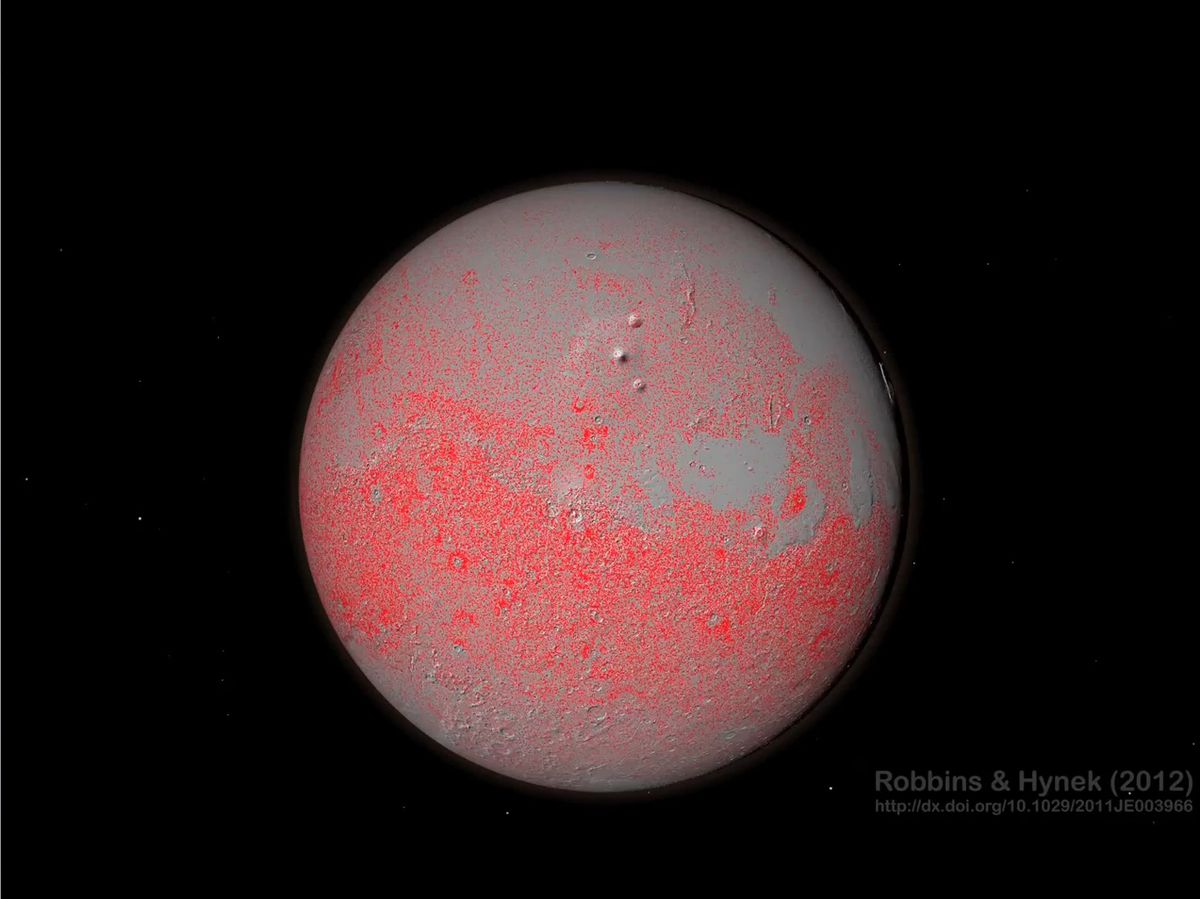Mars Surface Scarred by 635,000 Big Impact Craters

The surface of Mars is pocked by more than 635,000 impact craters at least 0.6 miles (1 kilometer) wide, a new study reports.
The new Martian crater atlas is the largest single database ever compiled of impacts on a planet or moon in our solar system, researchers said. It highlights the violent history of Mars and could also help scientists address a number of questions about the Red Planet.
"This database is a giant tool that will be helpful in scores of future Mars studies ranging from age-dating and erosion to planetary habitability, and to other applications we have not even thought of yet," study leader Stuart Robbins, a postdoctoral researcher at the University of Colorado, Boulder, said in a statement.
Martian mysteries
Robbins and co-author Brian Hynek, also of CU Boulder, sifted through huge piles of data from a number of Mars orbiters and landers to compile the new database.
"I basically analyzed maps and drew crater rim circles for four years," Robbins said.
The painstaking effort could help researchers learn more about Mars and its history, including its past potential to host life as we know it, researchers said. [7 Biggest Mysteries of Mars]
Sign up for the Live Science daily newsletter now
Get the world’s most fascinating discoveries delivered straight to your inbox.
"Many of the large impact craters generated hydrothermal systems that could have created unique, locally habitable environments that lasted for thousands or millions of years, assuming there was water in the planet’s crust at the time,” Hynek said. "But large impacts also have the ability to wipe out life forms, as evident from Earth’s dinosaur-killing Chicxulub impact 65 million years ago."
Scientists also use craters to help date planetary surfaces, reasoning that the more craters pepper a region, the older it must be. So the new map should help researchers better understand Martian history and the role played by volcanic activity and erosion, which have resurfaced large parts of the planet.
"Our crater database contains both rim heights and crater depths, which can help us differentiate between craters that have been filled in versus those that have eroded by different processes over time, giving us a better idea about long-term changes on the planet’s surface," Robbins said.
A window on Earth's past
Scientists have catalogued just 200 or so impact craters on Earth, but that's not to say our planet hasn't been battered as badly as Mars over the ages. It's just that Earth's atmosphere, lifeforms and tectonic activity obliterate its craters or make them difficult to see.
So the new Mars map — combined with data from the moon and Mercury, where craters are also relatively well-preserved — should provide a window into our own planet's past, researchers said.
Planetary scientists are particularly interested in a short span of time about 3.9 billion years ago, just 600 million years or so after the solar system formed. In this period, which is known as the Late Heavy Bombardment, asteroids as large as the state of Kansas rained down on Earth and the other rocky planets, dramatically reshaping their surfaces.
The new study appeared earlier this month in the Journal of Geophysical Research – Planets.
This story was provided by SPACE.com, a sister site to LiveScience. Follow SPACE.com on Twitter @Spacedotcom. We're also on Facebook and Google+.












